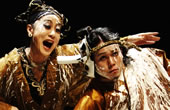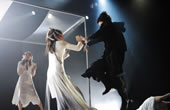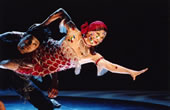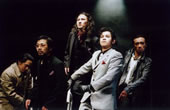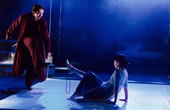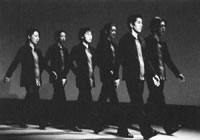

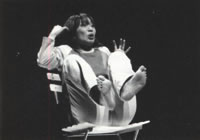

The aim of Yamanote method,
uniquely developed for training actors
The aim of Yamanote Method, uniquely developed for training actors, is to develop the techniques for dialogue and enhance the sense of body through self-examination. As basic literacy for actors, it is practiced everyday. More specifically, it is grouped into seven categories.
Body Exercise
Flexibility exercises, resistance training, and vocal exercise.
Basic Practice
Feeling strong emotions, actors must utter words and move their bodies smoothly. To archive this, it includes walking exercise as basic movement, “two-beat”in which actors move bodies and change facial expressions in tune with various emotions, practice in changing move-ments in everyday life into stage acting, and training for enhancing imagination through body movement.
Free Improvisation
Given tens of “basic situations”(selected from among more than ten thousand suggestions from the company members), actors improvise, so they will enhance all the senses required of them.
Short Stories Practice
Having started as a means to exploring realism acting, short stories practice is now improvisational enacting of short sketches created through group discussions.
Impersonation
As Zeami noted in his seven-book treatise on no,Kadensho Yamanote method puts a primary em-phasis on impersonation. Actors try to mimick their friends or acquaintances who give strong impressions on them. In doing so, they are expected to grasp the sense of transforming themselves into other personalities.
RPAM
The combination of rhythm, play, acting and movement, RPAM is a kind of dance specially designed for modern Japanese actors who lack bodymovement literacy such as ballet and Japanese dancing (“nihon buyo”).

